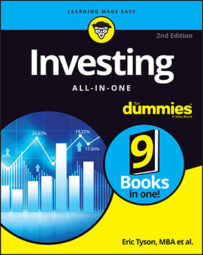Savvy real estate investors monitor their markets and look for the telltale signs of real estate cycles. These cycles present opportunities for expanding your real estate portfolio or repositioning from weakening markets to strengthening markets because not all areas experience peaks and troughs at the same time. That is why you need to know and track the timing of seller’s and buyer’s markets.
Understanding real estate cycles
Real estate markets are cyclical, and successful real estate investors remain aware of the real estate cycles in their areas. First, you need to understand seller’s and buyer’s market:- A buyer’s market occurs when current property owners are unable to sell their properties quickly and must be more flexible on the price and terms. This is a great opportunity to seek seller financing.
- A seller’s market is almost like the classic definition of inflation — “too much money chasing too few goods.” In this case, the goods are real estate properties, which are in high demand. When sellers are receiving multiple offers within 24 to 48 hours of a listing or you see properties selling for more than the asking price, you’re in a strong seller’s market.
However, not everyone agrees that real estate cycles are relevant to residential real estate investors. Some of the real estate infomercial gurus claim that real estate investing in homes and apartments is recession-proof because people always need a place to live. Although that is partly true, the economic base of the community where you invest does have a direct impact on all aspects of your operations — occupancy, turnover, rental rates, and even quality of tenant.
For example, when times are tough, residential tenants are the first to improvise, with some finding that “doubling up” or even taking in roommates is palatable if it results in lower costs for housing. Some younger renters are even willing to move back in with Mom and Dad or another relative when their personal budgets don’t allow them to have their own rental unit.Can real estate investors who track real estate cycles make investment decisions based on this information? Absolutely. That is where most successful and knowledgeable real estate investors see potential for increasing their real estate investment returns by timing the real estate market.
Timing the real estate market
Although the length and depth of real estate cycles vary, there are clear highs and lows that real estate investors need to consider.In some real estate markets, the double-digit appreciation over the first half of the 2000s brought record prices for homes and income properties. In the mid-2000s, the most common question asked on a Southern California NBC call-in feature was “Should I buy income properties in Southern California at these seemingly high price levels, or should I invest elsewhere?”
These callers didn’t want to miss out on what they thought was almost guaranteed price appreciation. But what goes up must come down, so when the market corrected in the late 2000s with significant price declines in most areas of the country, the most common question was, “When will we reach the bottom of the market?”
No one-size-fits-all answer solves this critical question. A key factor is the investment horizon, or planned holding period for a particular investor and that specific investment. If the holding period is long enough, even purchasing income properties in today’s seemingly overpriced markets will probably look good 15 to 20 years from now.
The alternatives are to identify those markets with excellent economic fundamentals where prices have remained low and invest there. The concept is similar to the “buy low, sell high” truism for stocks, except you sell in overpriced markets and reinvest in the lower-priced markets. Such markets do exist, but the question is whether the properties in the lower-priced markets are going to provide the same or better investment returns in the long run versus alternative markets.
Unlike the stock market, real estate transactions entail significant transaction costs (as a percentage of the market value of the property). That’s why selling and buying property too frequently undermines your returns.
It’s our contention that even in the few markets where such “bargains” exist, they aren’t really great opportunities. This is reminiscent of the business concept that in the long run you usually get what you pay for! There is so much more than just the projected rent and the selling price. Without going into a detailed analysis of property condition, expenses, and other invaluable criteria, you should simply consider whether these areas pass muster after performing the economic analysis described earlier. Probably not.You may already recognize that risk and return are generally related. That is, the lower the risk you take, the lower your expected return.
So the real question is, what are the risk-adjusted returns like for investing in these areas of the country with record high prices versus the risk-adjusted returns available in other, lower-priced real estate markets? You may find a rural property where the monthly rent exceeds the going average for the area, but what about rent growth and appreciation? At the end of the day, you may find that the lower-priced market with all those “bargains” provided you with minimal cash flow and marginal appreciation.
Knowing when to sell and when to buy real estate is easier said than done. But if you follow the fundamentals of economic analysis, and remember that “location, location, value” is the key to successful real estate investing, you can do well.

